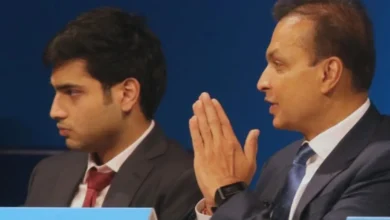Credit card usage rides on digital push, grows 27%
Credit cards in circulation touched 48.9 million in May from 38.6 million in the same period last year, data sourced from the Reserve Bank of India showed.
The 27% growth has thrown up new business opportunities, say payment industry executives.
India has primarily been a debit card market, with more than 824 million such cards in the system, as per RBI figures. Unified Payments Interface (UPI) and mobile wallets have grabbed the attention of policymakers, but the increase in the number of credit cards is not only an indication of growing digital payments but also the expansion of retail borrowers in the ecosystem.
“We are issuing nearly a million new credit cards per month and the number of unique credit card users could be in the range of 25 to 30 million, which shows the market has grown phenomenally well,” said Madhusudanan R, founder, Yap, which offers a platform for all forms of payment solutions to banks, NBFCs and fin-tech companies.
The total transaction value on credit cards has also gone up. In 2018-19, consumers spent around 6 lakh crore using their credit cards, 30% higher from the 4.6 lakh crore in 2017-18.
HDFC Bank has issued 12 million credit cards, while State Bank of India has more than 8.7 million cards in the system, followed by ICICI Bank and Axis Bank.
“Our growth has been possible due to our focus on bringing out innovative and industry-first products, co-branded partnerships, cashback programmes and technology. Since October 2017, we have focused on tapping SBI customers for new card acquisitions which has also ensured that our portfolio remains healthy in terms of delinquency,” said Hardayal Prasad, chief executive officer, SBI Card.
Besides banks, many fintechs are cashing in on the credit cards boom.
Cred, started last year by Freecharge founder Kunal Shah, is one of the biggest players in this space, while there are also a few early-stage companies such as Slice Pay and EnKash. Large tech companies like Paytm, Flipkart and Ola too have started their own credit cards.
“We are offering our product to employees of startups, students of major colleges, generally consumers who are new to credit, and who will never be catered to by traditional banks,” said Rajan Bajaj, chief executive officer, Slice Pay. “We are using RuPay to settle card transactions and our banking partner is Yes Bank.”
The Bengaluru-based company offers a 35-day credit cycle where users can repay by the fifth day of the next month or convert their purchases into zero cost EMIs.
EnKash has launched a credit card for small businesses, which are usually not serviced by traditional banks.
The company is also in the process of integrating with a card scheme and a bank, cofounder Yadvinder Tyagi said.
“Now, entry-level salaries at corporate jobs have gone up, eligibility has gone up, which allows banks to issue cards to consumers on entering the job market,” said Tyagi. “As they go up the corporate ladder, their credit limit also goes up and a steady credit consumption trend is built.”
Industry players have demanded that non-banking finance companies should also be permitted to issue credit cards. Currently, Bajaj Finance issues cards in partnership with RBL Bank. Since large NBFCs have been underwriting customers for years, they can help push consumption if allowed to issue credit cards directly.
“There are around 30 million unique credit card customers, but credit bureaus have data for 400 million consumers, the gap can be bridged by allowing more entities to issue credit cards,” said Naveen Surya, chairman, Fintech Convergence Council, an industry body for fintech companies. “Entry of NBFCs in this space will drive growth for digital credit as well as digital payments.”




